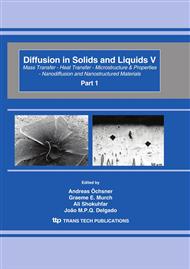p.1053
p.1059
p.1065
p.1071
p.1077
p.1083
p.1091
p.1097
p.1103
Influence on Olive Leaves (Olea Europaea, var. Serrana) Antioxidant Extraction Kinetics of Ultrasound Assisted Drying
Abstract:
The olive crop has a great importance in the economy of Spain. Every year during the pruning of the olive trees a significant quantity of leaves are cut and discarded. It is known that these leaves constitute a source of antioxidant compounds and its processing would provide an added value to this raw material. Antioxidant compounds may be damaged when drying, the previous process to extraction. Thus, the goal of this work was to study the influence of the high intensity ultrasound applied during the drying of olive leaves on the kinetic of extraction of antioxidants compounds. From the parameters identified from Naik model, it can be concluded that the application of high intensity ultrasound during drying reduced the antioxidant activity of extracts at the equilibrium but increased the initial extraction kinetic compared to conventional hot air drying. This last aspect could have high interest to the antioxidant extraction from an industrial scale point of view.
Info:
Periodical:
Pages:
1077-1082
Citation:
Online since:
April 2010
Price:
Сopyright:
© 2010 Trans Tech Publications Ltd. All Rights Reserved
Share:
Citation:


